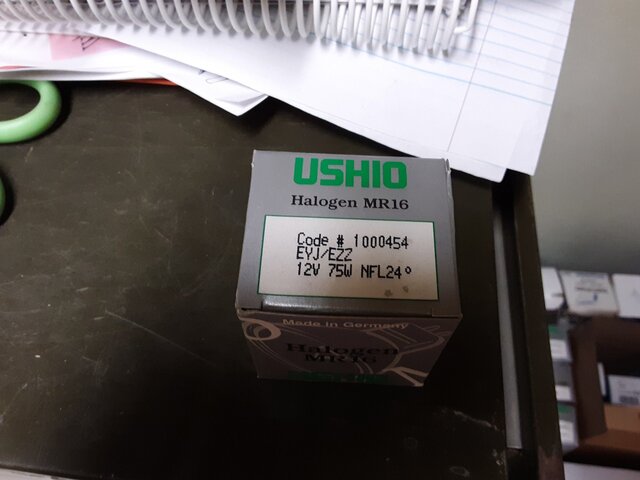Take a 12 volt battery (motorcycle, car, something that can handle the
current) and a DC amp
meter. Put the lamp, battery, and
meter in series. See how much
current it draws. Provided the battery really was 12 volts, multiply that by the amps and you will know the wattage of the unmarked lamps. Might want to take a
voltage read on the battery while it's all lit up as 12 volt batteries are rarely 12 volts!
@Ravenbar If / when you're doing this, make sure your
meter's set to a
current range which can safely handle the anticipated
current. With today's digital volt
ohm milliameters internal over
current and over
voltage protection is vastly improved from the EICO 4.5"
VOM's of the 1950's and 1960's. I made the error of loaning one of my
VOM's to a school mate to
trace out an electrical issue with an old car he'd purchased. Imagine my surprise when he returned my
VOM in visually flawless condition but with all of the internal
shunt resistors vaporized on all of the four
current ranges. Ron Schweitzer had solved all of his problems and then thought it would be
interesting to read the
current consumption of his old Dodge's various electrically operated accessories. Young Mr. Schweitzer mistakenly read the 500 milliamp range as 500 Amps. It didn't bother him l that my
meter's detachable leads were approximately 20
gauge copper. When he placed my
meter in series with his 12 volt starter and hit the key, my
meter's 500 milliamp
shunt vaporized in a puff of
smoke. Young Mr. Schweitzer then noticed the two separate pin jacks clearly labelled 10 Amps. Appreciably more than a 100 amps of cold cranking
current made short work of my
VOM's 10 Amp
shunt as well. By the time young Mr. Schweitzer continued to explore the
current consumption of his old Dodge's various accessories he'd eventually vaporized every internal
shunt in my trusty EICO 4.5"
VOM. I used to really like that
VOM, it was one of the first EICO kits I'd built. I believe that
VOM is still in a box on a basement shelf in my former abode where I kept it as a reminder of loaning valued test gear to young secondary school acquaintances. Young Mr. Schweitzer graduated from our secondary school's electrical courses and went on to become an
IBEW (International Brotherhood of Electrical Workers) journeyman electrician in Hamilton, Ontario's
IBEW local 105. I've long lost
track of both Ron Schweitzer and his identical twin brother Don; Don was in school to become an auto mechanic. Don blew up his brother's gas tank in his parents side driveway, blew it up
REAL GOOD! Broke several side windows in this parents two and a half story home along with the glass in their side storm door. In auto class, under close supervision, they taught students taking auto repair as a specialty that it was safe to repair leaks in gas tanks with an acetylene
torch while they were full of fuel as long as you were working in a well ventilated area with the tank's cap tightly in place and you were working below the
level of fuel in the tank. The best student in our auto shop repaired leaks in several teacher's cars following our auto teacher's instructions. Young Mr. Donald Schweitzer thought he was being extra careful by emptying his brother's car's tank, thoroughly rinsing it with water, leaving it uncapped to dry thoroughly over a hot summer weekend and then was surprised when it blew up singeing his eyebrows, rupturing the tank and breaking several panes of glass. He was wearing plastic sunglasses in lieu of eye protection. It was hours before he could begin to see again and days before his
vision thankfully returned to normal.
Details; paying attention to details is so often important.
To swerve this back to our topic: Be sure your
meter, its leads and probes can safely handle the
current you're anticipating.
@JD Do you concur?
Toodleoo!
Ron Hebbard



